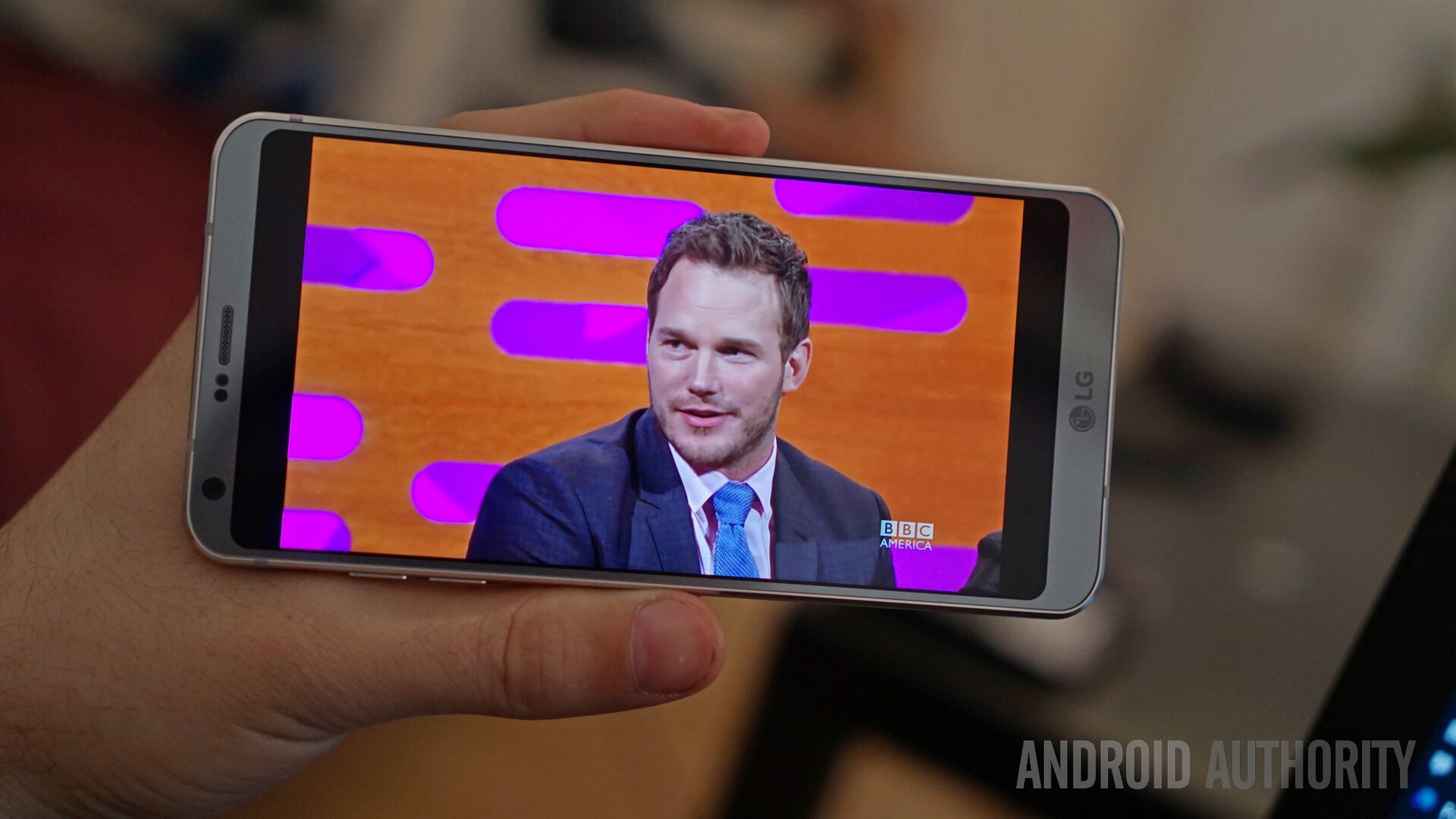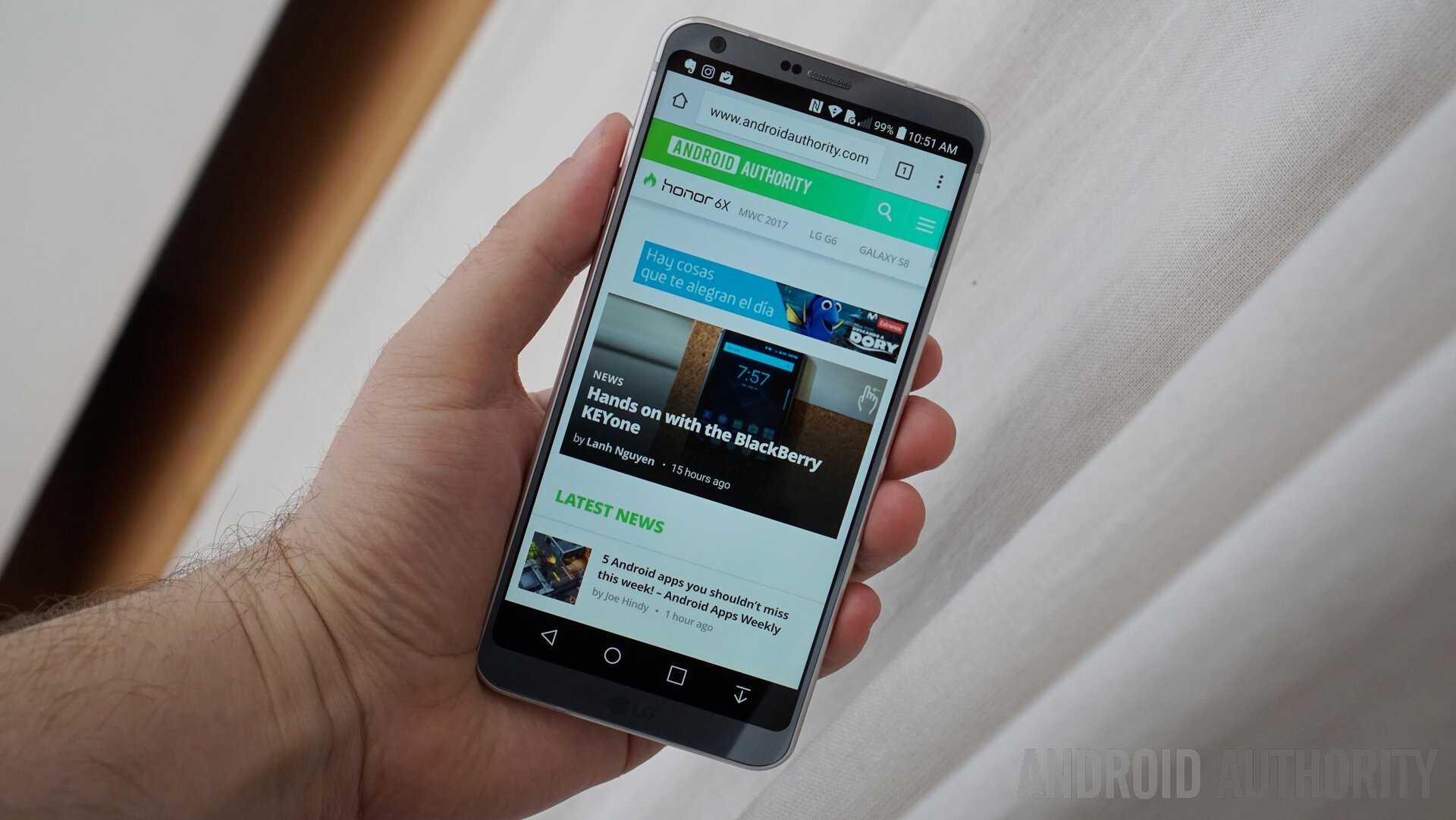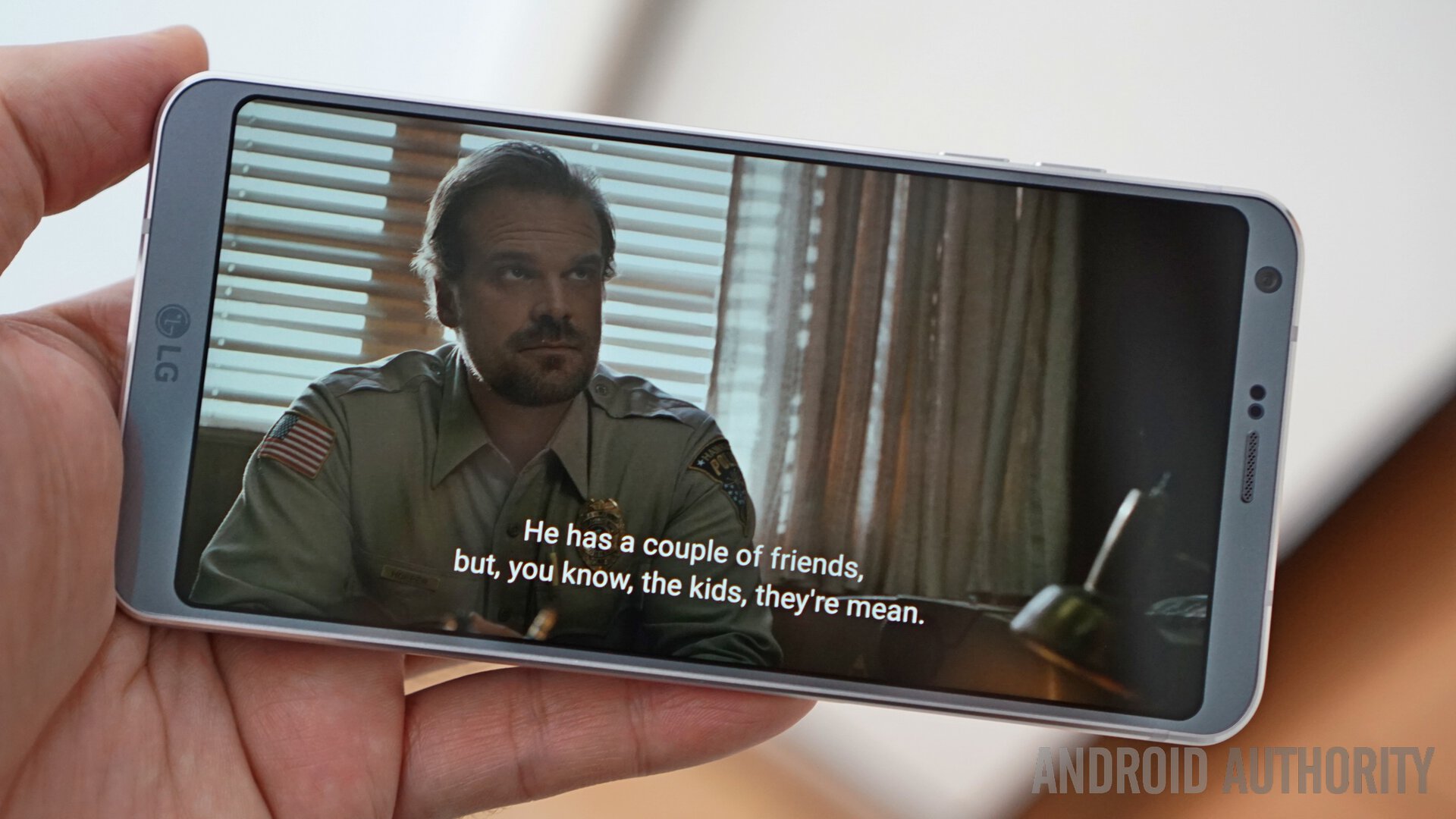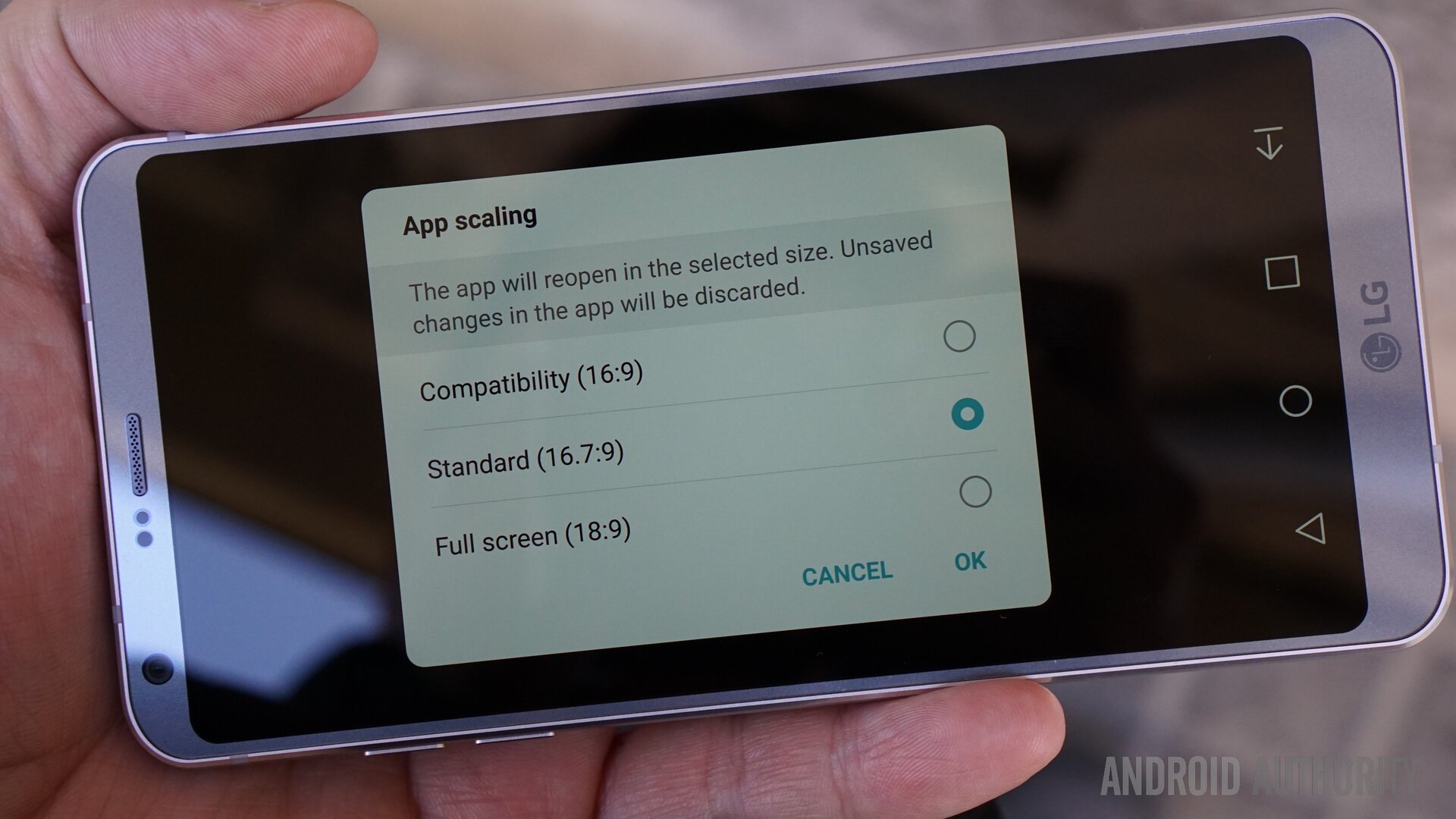Affiliate links on Android Authority may earn us a commission. Learn more.
So what's up with the LG G6's 18:9 screen?

You may not notice the LG G6 display’s aspect ratio right away, but LG really wants you to believe that the 18:9 screen of its new flagship is game-changing. And that may be true – to an extent. But is the new, taller screen of the G6 (and the Galaxy S8 and presumably other upcoming phones) everything it’s hyped to be? What benefits do you really get and what compromises should you expect?
In the hand
The LG G6 feels – and is – smaller than any other 5.7-inch device out there, smaller even than many phones with smaller displays. The 5.5-inch Pixel XL looks like a lumbering beast in comparison. LG’s own V20, which also features a 5.7-inch display, is more than a centimeter taller and more than half a centimeter wider. By simply tweaking the proportions of the length and the width of the G6’s display, LG managed to provide a solid compromise between screen surface and compact build.
That said, LG doesn’t have any miracle workers on its payroll. The G6 is still a large device and the extra-tall profile makes it a little harder to hold the phone, compared to a 16:9 device of, say, 5.2 inches that might be similar in overall size. It’s noticeably harder to balance the phone in the palm of your hand, and the smooth glass back doesn’t really help.

It’s also quite hard to reach the upper portion of the device in one-hand use. I have large hands, and the tip of my thumb normally sat around the middle of the screen. Moving it upward, like for pulling down the notification bar, required me to slide the phone down slightly in my hand, which can be perilous if you’re not careful. (The semi-workaround for the notification shade is to place a shortcut button in the nav bar at the bottom.)
Video, apps and other content
The resolution of the LG G6 display is 2880 by 1440. That’s 2:1, or, for the convenience of comparing it to the established 16:9 format, 18:9. LG said it drew inspiration for this format from Univisium, a fledgling film format that attempts to unify the various standards used in cinematography and television.
To highlight this connection, LG called its display FullVision, but the problem is you won’t get the “full vision” experience with most video content out there. That’s because most videos are formatted in 16:9, so when you play them on the LG G6, you get black bars on the sides of the screen to fill out the space that simply doesn’t exist for a 16:9 frame.
That’s not to say that you can’t find content that plays in full screen on the G6 though; on Netflix, for instance, House of Cards and Stranger Things are both 2:1. And even if you have to settle for 16:9, the letterboxing is hardly a deal-breaker.

Video apps aside, most apps should have no trouble adapting to the LG G6’s 18:9 format, as Android apps are built to scale gracefully across a variety of display sizes and formats. But LG clearly anticipated that some apps could run into issues, as it added an “App scaling” feature that lets you select the format you prefer for certain apps.
You can switch between Compatibility (16:9), Standard (16.7:9) and Full Screen (18:9) with a swipe down from the top of the screen. This only works for some apps that go full-screen, like Netflix, and you can see – and edit – saved settings for apps in Settings.
Having the extra tall screen is advantageous in some situations, though only slightly so. Compared to the V20 (which has the same size display), the G6’s fits more content of a web page on screen, so you have to scroll a little less to read it. But the difference is tiny – just one or two extra lines of text.

LG has been oddly silent about virtual reality over the past year. It did come up with a half-baked headset for the LG G5, but that looked more like a token effort to spice up the list of modules coming with the G5. We asked LG if it’s thinking about coming up with its own mobile VR headset that is compatible with the G6, and company representatives said that’s definitely under consideration, but didn’t really offer a committal answer. The reason we asked is because 2:1 displays are actually great for VR, as they allow for the maximum use of the display.
Is 18:9 the future?
LG seemed very proud to be the first in the industry to release a 18:9 smartphone and it’s a safe bet to say that future LG flagships will carry over the format. Company representatives even hinted during our briefing that Samsung and Apple would follow suit this year, and, if that happens, it’s likely that the industry as a whole will make the jump to 18:9.
As we touched upon in another post, 18:9 will also move downrange to LG’s mid-range devices, though the G6 and other flagships will get their exclusivity window first.
Should you buy the LG G6 for a more immersive video experience? Not really. That said, the compact build made possible by the screen is totally worth it. We really would’ve liked to see a smaller device in 18:9 (maybe a LG G6 and “G6 Plus”), just to see how portable and easy to use with one hand a 5.2-inch 18:9 phone could be. But the G6 is already a great choice for anyone who prefers larger phones and even for some of the people who were tempted by phablets before but didn’t really make the step because of the intimidating size.